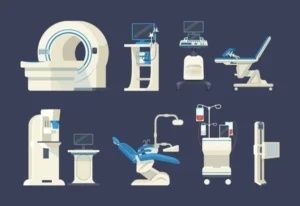Industrial Color Sensors Explained: Discover Facts, Details, and Information
Industrial color sensors are electronic devices used in automated manufacturing and quality‑control systems to detect and analyze the color of objects. Unlike simple presence sensors, a color sensor doesn’t just say whether something is there — it determines which color is reflected or transmitted. These sensors typically illuminate a target using an LED, collect the reflected or transmitted light via photodetectors, and then process it to compute color values like RGB (red, green, blue) or more advanced color coordinates.
They evolved because human visual inspection is often too slow, inconsistent, or impractical in high-speed industrial environments. Machines equipped with color sensors can make split-second decisions — for example, diverting off‑shade products, detecting faults or impurities, or verifying correct labels — without tiring or making subjective errors.
Importance
Color is more than just aesthetics in many industries: it often signals quality, consistency, or process correctness. Here’s why industrial color sensors matter today:
-
Quality Assurance: In sectors like automotive, textiles, packaging, and plastics, exact color matching is critical. Even small shade deviations can affect consumer perception or lead to rejections.
-
Automation and Efficiency: These sensors help automate inspection and sorting tasks that would otherwise require manual checking — speeding up production and reducing labor costs.
-
Error Detection: They can catch defects such as wrong labels, missing inks, or contamination, reducing waste.
-
Process Control: In processes where color signals a chemical or physical change (like adhesive bead presence or curing), color sensors help monitor and control the process.
-
Industry 4.0 Integration: As factories adopt smart manufacturing, these sensors feed real-time color data into control and quality management systems, allowing closed‑loop corrections.
Effectively, industrial color sensors help improve product consistency, reduce defects, optimize resource use, and enable smarter, more automated production.
Recent Updates (Trends & Developments)
Over the past year, several key trends and innovations have shaped the use and development of industrial color sensors:
-
Integration with IoT & Industry 4.0:
-
Growing use of color sensors that connect via industrial networks to PLCs and quality management systems.
-
This enables real-time feedback and automated adjustments, reducing rework and improving throughput.
-
-
AI and Machine Learning Enhancement:
-
Advanced color detection systems are combining AI/ML algorithms to adapt to changing lighting, variable materials, or environmental conditions.
-
These adaptive sensors are more robust, especially in applications with complex or unpredictable color profiles.
-
-
Miniaturization:
-
Color detection sensors are becoming smaller and more compact, making it possible to embed them in tight spaces or portable devices.
-
Such miniaturized sensors are used in traditional manufacturing as well as in wearables, diagnostics, and small-scale IoT devices.
-
-
Spectrophotometric Sensing:
-
Higher‑precision sensors using spectral analysis are gaining traction, capturing many wavelengths for very fine color differences.
-
Useful in industries where tight color tolerances are essential, such as automotive paints and medical diagnostics.
-
-
Color‑Based Environmental Monitoring:
-
Research is exploring how color sensors can detect environmental emissions, such as classifying industrial smoke by its color and dynamics to monitor pollution.
-
Laws or Policies
The use of industrial color sensors intersects with regulations primarily through industrial safety, quality standards, and environmental norms:
-
Quality Standards and Industry Regulation:
-
Quality assurance rules often demand precise color matching and defect control, with standards around acceptable color deviation.
-
Machine vision and sensor systems may need to comply with performance measurement protocols that standardize how sensor performance is reported.
-
-
Industrial Automation and Safety Laws:
-
In many countries, workplaces operating automated manufacturing lines must comply with occupational safety legislation.
-
Using sensors safely and integrating them with control systems implicates safety procedures, hazard assessments, and worker training.
-
-
Environmental Regulations:
-
With increasing attention on emissions monitoring, color-based sensing may feed automated environmental control systems.
-
-
Standardization Bodies:
-
Organizations such as ISO influence sensor deployment via standards on process control, industrial automation, and quality management.
-
Tools and Resources
Here are useful tools, websites, and resources for learning more about, designing, or implementing industrial color sensors:
-
Standards and Measurement Frameworks:
-
EMVA 1288 Standard — Defines how to measure and report machine vision sensor performance.
-
CIE Color Space & ΔE Calculators — Tools to compute color‑difference metrics using standard color space formulas.
-
-
Educational References:
-
Electronics and technical blogs explaining sensor working principles, use of filters, and signal processing.
-
Guides on color spaces (like L*a*b*) and how sensors use them, including ΔE error measurements.
-
-
White Papers & Technical Papers:
-
On industrial color measurement, precision tolerances, and how to choose sensors.
-
Research on combining color sensing with spatiotemporal data for real-time monitoring.
-
-
Market & Trend Reports:
-
Insights into market size, growth trends, and emerging technologies.
-
Focus on innovations, connectivity, and integration into smart factories.
-
-
Open‑Source & DIY Platforms:
-
Arduino projects using color-sensor modules to build sorting or detection systems.
-
Online forums discussing real-world deployment, integration, and troubleshooting of color sensors.
-
Frequently Asked Questions (FAQs)
Q: How does a color sensor actually “see” color?
A: The sensor illuminates the object, separates reflected light into color channels, and converts it into electrical signals, which are processed to compute color values.
Q: What is ΔE, and why is it important in industry?
A: ΔE quantifies the difference between two colors in a color space. Lower ΔE means very similar colors. Tight tolerances ensure visual consistency in industries like automotive paint.
Q: How are color sensors different from vision systems or traditional photoelectric sensors?
A: Photoelectric sensors detect presence or absence, vision systems analyze shape, texture, and color across a field, and color sensors measure color more precisely than basic sensors while being simpler than full vision systems.
Q: Can color sensors adapt to changing lighting or surface conditions?
A: Yes — modern sensors include calibration routines, white-balance adjustment, and AI/ML-based compensation for varying conditions.
Q: What are the limitations of industrial color sensors?
A: Limitations include difficulty detecting transparent or reflective surfaces, need for periodic calibration, limited spectral resolution compared to spectrophotometers, and integration challenges in production lines.
Conclusion
Industrial color sensors are powerful devices bridging the gap between simple presence detection and complex vision systems. By translating color into precise data, they help maintain product quality, reduce waste, and enable automation in manufacturing.
As smart factories and Industry 4.0 continue to evolve, these sensors are becoming more connected, compact, and intelligent — integrating with AI, real-time networks, and adaptive control systems. Their importance is technological and economic, ensuring consistent color quality and minimizing costly errors.






